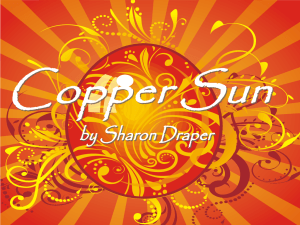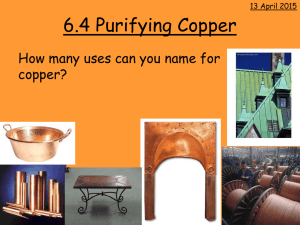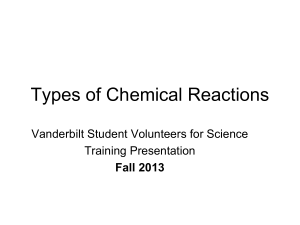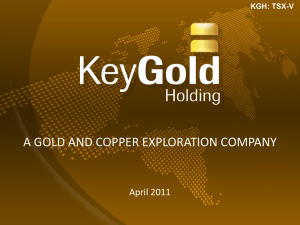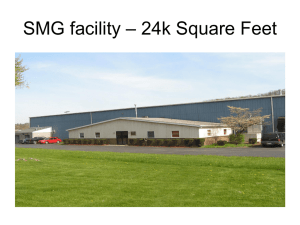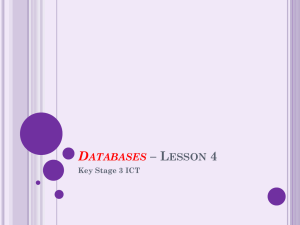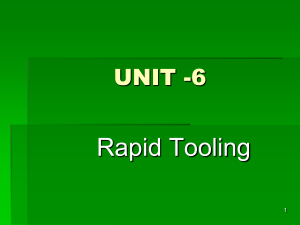Press Release - European Copper Institute
advertisement
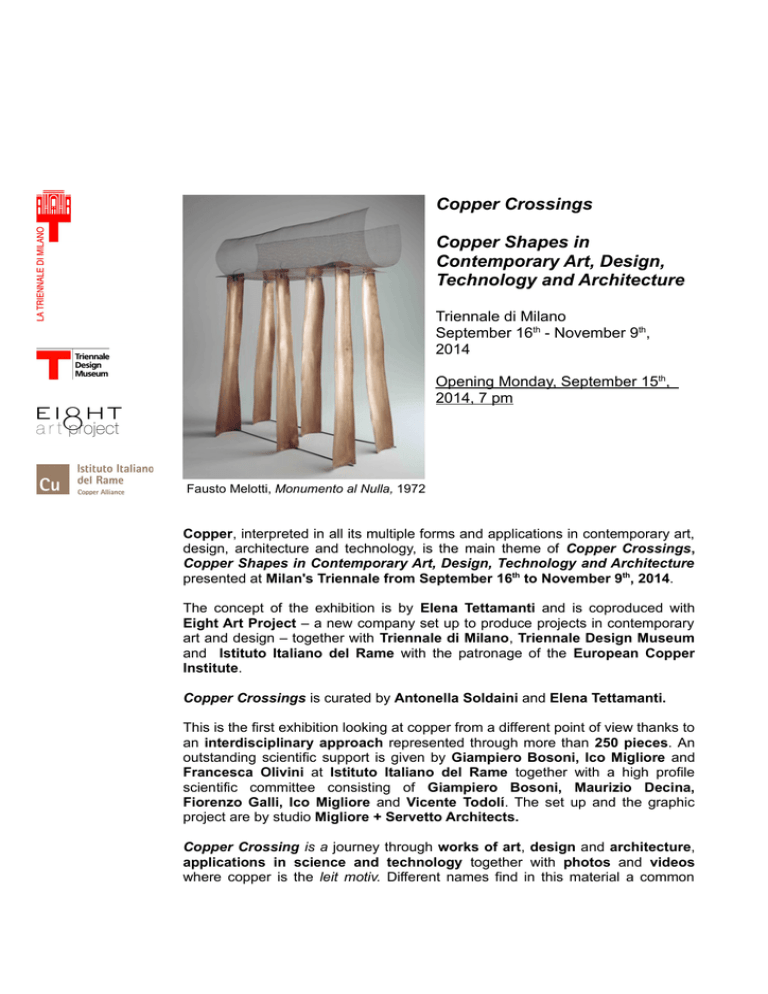
Copper Crossings Copper Shapes in Contemporary Art, Design, Technology and Architecture Triennale di Milano September 16th - November 9th, 2014 Opening Monday, September 15th, 2014, 7 pm Fausto Melotti, Monumento al Nulla, 1972 Copper, interpreted in all its multiple forms and applications in contemporary art, design, architecture and technology, is the main theme of Copper Crossings, Copper Shapes in Contemporary Art, Design, Technology and Architecture presented at Milan's Triennale from September 16th to November 9th, 2014. The concept of the exhibition is by Elena Tettamanti and is coproduced with Eight Art Project – a new company set up to produce projects in contemporary art and design – together with Triennale di Milano, Triennale Design Museum and Istituto Italiano del Rame with the patronage of the European Copper Institute. Copper Crossings is curated by Antonella Soldaini and Elena Tettamanti. This is the first exhibition looking at copper from a different point of view thanks to an interdisciplinary approach represented through more than 250 pieces. An outstanding scientific support is given by Giampiero Bosoni, Ico Migliore and Francesca Olivini at Istituto Italiano del Rame together with a high profile scientific committee consisting of Giampiero Bosoni, Maurizio Decina, Fiorenzo Galli, Ico Migliore and Vicente Todolí. The set up and the graphic project are by studio Migliore + Servetto Architects. Copper Crossing is a journey through works of art, design and architecture, applications in science and technology together with photos and videos where copper is the leit motiv. Different names find in this material a common ground to work according to their personal experiences exploiting in the most innovative ways the formal, structural and plastic qualities of copper. The 30 works shown in the section devoted to contemporary art represent the most important post-war art movements, from Arte Povera to Minimal Art up until the latest artistic trends. In the design section more than 100 objects designed by some of the top names in the sector together with some examples from the renowned fashion brands. Architecture is explored through 10 scale models representing the work of some of the greatest architects and finally a surprising section dedicated to technology featuring applications on IT, medical equipments, energy conduction and transportation. All the pieces in the show are on loan from the major museums, galleries and private collections in Italy and Europe, a statement highlighting the thorough research work which constitutes the essence of Copper Crossings. The works in the contemporary art section testify the power of attraction copper had throughout the years and the different movements using shiny, oxidised or acidated plates as well as weaved wires, delicate shapes and unexpected combinations with other materials or reflecting parabolas. Historical works have been selected, by Lucio Fontana, Fausto Melotti, Carl Andre, Marco Bagnoli, Joseph Beuys, Luciano Fabro, Anselm Kiefer, Eliseo Mattiacci, Marisa Merz, Hidetoshi Nagasawa, Remo Salvadori, Gilberto Zorio, Meg Webster; the “most contemporary” include Roni Horn, Cristina Iglesias, Damián Ortega as well as artists of last generations like Andrea Sala, Alicja Kwade and Danh Vo, to mention a few. Some of the pieces have not been shown to the public for quite some time, some others have been specifically realised for the exhibition. All the pieces have been lent by important museums like MAXXI – Museo nazionale delle arti del XXI secolo, Rome; Museo Cantonale d’Arte, Lugano; Museion – Museo di arte moderna e contemporanea, Bolzano; Fondazione Fausto Melotti, Milan; Fondazione Merz, Turin; Fondazione Musei Civici di Venezia, Panza Collection, Varese; Ca’ Pesaro, Venice; Archivio Luciano e Carla Fabro, Milan; Casa-studio di Fernando Melani, Pistoia; as well as by the artists themselves, private collectors and galleries. In the world of design copper has aroused great interest, particularly in recent times, with surprising and original outcomes. Ron Arad, Luigi Caccia Dominioni, Antonio Citterio, Dimore Studio, Tom Dixon, Odoardo Fioravanti, Martí Guixé, Gujan Gupta, Poul Henningsen, Thomas Heatherwick, Ross Lovegrove, Nucleo, Gio Ponti/Paolo De Poli, Tobia Scarpa, Ettore Sottsass, Oskar Zieta and Giorgio Vigna, to mention a few, have designed and created common household objects due to their attraction to shine of copper, its oxidation and technological applications. A selection of more than hundred objects of design on loan from European museums and galleries will be presented together with some clothes designed by Romeo Gigli and Prada, who have experimented with the qualities of copper in the most creative way. In the section on architecture, some scale models of projects from architects such as Herzog & de Meuron, Renzo Piano, Aldo Rossi, Steven Holl Architects and James Stirling will be presented. The pieces in this section have also been loaned by prestigious institutions like Fondazione MAXXI, MAXXI Architettura, Rome; Fondazione Aldo Rossi, Milan; Fondazione Renzo Piano, Genoa; Herzog & de Meuron Architecture Studio, Basel; Steven Holl Architects, New York. Copper is also widely used in technology; found in microprocessors and other electronic components, it is a fundamental component for the IT and telecommunications industry. In medical science copper and its compounds were already used by Egyptians and Greeks for personal hygiene and continue to be used today for their antimicrobial qualities. In the energy sector copper is also an important conductor which is both cost-effective and environmentally friendly. Not to mention copper applications in transportation, agriculture and food, household and many other sectors. Thanks to the Museo Nazionale della Scienza e della Tecnologia Leonardo da Vinci in Milan, the section on technology will feature a number of objects and applications: copper minerals in several phases of the manufacturing process; electromagnetic machines and electricity generators; interfaces of operating systems; computers, and telephones and particle measuring systems. There will also be products, videos and photos coming from other museums such as Museo Civico di Storia Naturale in Milan and the Museo per la Storia dell’Università of the University of Pavia. The section on technology will be set up permanently within the Museo Nazionale della Scienza e della Tecnologia Leonardo da Vinci in Milan after the show. The catalog will be published by Skira both in Italian and English. It will have a comprehensive iconography, general bibliography and essays by curators Antonella Soldaini and Elena Tettamanti as well as contributions by Giampiero Bosoni, Paolo Consigli, Maurizio Decina, Katrien Delbeke, Eva Fabbris, Vincenzo Loconsolo, Ico Migliore, Francesca Olivini and Michela Pereira, Within the exhibition, a charity event will be hosted in November. The proceeds will be donated to Dynamo Camp and its recreational therapy activities for ill children. Ad Artem will organise the educational activities, whereas Triennale Design Museum will manage workshops for schools inside the venue. The main exhibition sponsor is KME. Other sponsors include Prysmian S.p.A, Ducati Energia, Ferrovie Nord Milano S.p.A. And AON S.p.A. Eight Art Project S.r.l. Eight Art Project S.r.l. is a company operating in the contemporary art and design field producing and organising cultural projects. It was founded in January 2014 by architect and decorative arts expert Elena Tettamanti, who has devoted the last years to contemporary art exhibition with an holistic approach: from the original concept to curatorship, up until found raising and management of institutional networks. Eight Art Project seeks the contribution from curators and experts of high standard who integrate the team of each project. Press Information Giovanni Sgrignuoli m +39 328 9686390 giovanni.sgrignuoli@gmail.com CASADOROFUNGHER Comunicazione Elena Casadoro m +39 334 8602488 elena@casadorofungher.com Francesca Fungher m +39 349 3411211 francesca@casadorofungher.com www.casadorofungher.com Anselm Kiefer, Under der Linden, 2013 Tom Dixon, Cu 29, 2006 Oskar Zieta Plopp Copper Standard and mini, 2006 Renzo Piano Building Workshop Architects, NEMO, 1992 -1997 Mecanoo, National Heritage Museum, 1999-2000 Silicon vertex tracker of Babar, 2010, Collection of Museo Nazionale della Scienza e della Tecnologia, Milan. loan for use from INFN

